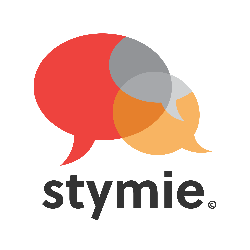Preventing and Responding to Bullying
The agreed national definition for Australian schools describes bullying as ongoing and deliberate misuse of power in relationships through repeated verbal, physical and/or social behaviour that intends to cause physical, social and/or psychological harm.
Single incidents, conflict or fights between equals, whether in person or online, are not defined as bullying. Behaviours that do not constitute bullying include:
- mutual arguments and disagreements (where there is no power imbalance)
- not liking someone or a single act of social rejection
- one-off acts of meanness or spite
- isolated incidents of aggression, intimidation or violence.
Miami State High School students have access to Stymie. Stymie “empowers young people to ask for help when they need support, or if they are seeing or experiencing harm. Stymie provides online reporting for schools. Encrypted, anonymous notifications are delivered within seconds to authorised recipients, who respond according to their wellbeing framework”.

Miami State High School uses the Student Learning and Wellbeing Framework to promote positive relationships and the wellbeing of all students, staff and visitors at the school.
Preventing
and Responding to Cyberbullying
Cyberbullying is treated at Miami State High School with the same level of seriousness as in-person bullying. The major difference with cyberbullying however, is that unlike in-person bullying, cyberbullying follows students into their community, their homes and their bedrooms, giving them no opportunity to escape the harassment or abuse during the evening, weekends or holidays. In the first instance, students or parents who wish to make a report about cyberbullying should approach the appropriate year level Dean of Students.
It is important for students, parents and staff to know that state school principals have the authority to take disciplinary action to address student behaviours that occur outside of school hours or school grounds that adversely affects, or is likely to adversely affect, other students or the good order and management of the school. This includes behaviour such as cyberbullying which occurs outside of school hours or settings, for example on the weekend or during school holidays. It also applies to inappropriate online behaviour of enrolled students that is directed towards other community members or students from other school sites. Parents and students who have concerns about cyberbullying incidents occurring during school holidays should immediately seek assistance through the Office of the e-Safety Commissioner or the Queensland Police Service.
Parents or other stakeholders who engage in inappropriate online behaviour towards students, staff or other parents may be referred to the Office of the e-Safety Commissioner and/or the Queensland Police Service. State school staff will be referred for investigation to the Integrity and Employee Relations team in the Department of Education.
Student involved in recording; and/or disseminating material and/or; knowingly being a subject of a recording are in breach of the Student Code of Conduct and may be subject to consequences (including suspension and recommendation for exclusion).
Students should note that the recording or dissemination of images that are considered indecent (such as nudity or sexual acts involving children), is against the law and if detected by the school will result in a referral to QPS. The sending of text messages that contain obscene language and/or threats of violence may amount to bullying and/or harassment or even stalking and will subject the sender to disciplinary action and possible referral to QPS. Students receiving such text messages at school, should ensure they keep the message as evidence and bring the matter to the attention of their year level Dean of Students.